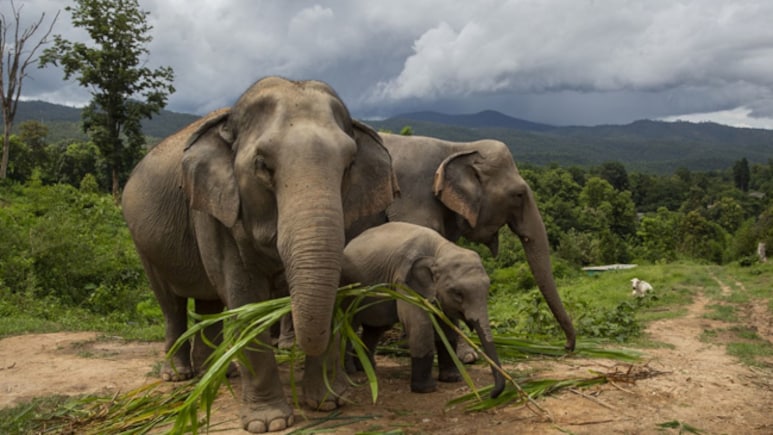
India's wild elephant population has been estimated at 22,446, lower than the 2017 figure of 27,312, according to the country's first-ever DNA-based count.
The All-India Synchronous Elephant Estimation (SAIEE) 2025 puts India's elephant population between 18,255 and 26,645, with an average of 22,446.
The government released the long-delayed report on Tuesday, nearly four years after the survey began in 2021.
Officials said the delay was due to the complex genetic analysis and data validation involved in the exercise.
Scientists collected 21,056 dung samples from across elephant landscapes and used DNA fingerprinting to identify individual animals, much like identifying humans through their genetic code. The total field effort covered nearly 6.7 lakh km of forest trails and included over 3.1 lakh dung plots.
Region-wise, the Western Ghats remain the biggest stronghold with 11,934 elephants, followed by the North Eastern Hills and Brahmaputra floodplains with 6,559.
The Shivalik Hills and Gangetic plains support 2,062 elephants, while Central India and the Eastern Ghats together have 1,891.
Karnataka continues to host the largest number of elephants at 6,013, followed by Assam (4,159), Tamil Nadu (3,136), Kerala (2,785) and Uttarakhand (1,792).
Odisha has 912 elephants, while Chhattisgarh and Jharkhand together account for over 650. Smaller populations survive in northeastern states such as Arunachal Pradesh (617), Meghalaya (677), Nagaland (252) and Tripura (153).
In parts of central and eastern India, states like Madhya Pradesh (97) and Maharashtra (63) have tiny, fragmented herds.
The 2025 exercise, carried out jointly by the Environment Ministry, Project Elephant and the Wildlife Institute of India, establishes a new scientific baseline for future monitoring and conservation planning.
The new count used a three-phase process combining ground surveys, satellite-based mapping and genetic analysis.
In the first phase, forest teams used the M-Stripes app to record elephant presence during extensive foot surveys.
The second phase assessed habitat quality and human footprint using satellite data. The third phase involved DNA extraction from dung to identify 4,065 unique elephants, with scientists using the mark-recapture model to estimate the overall population.
India is home to more than 60 per cent of the world's remaining Asian elephants, but their habitats continue to shrink due to encroachment, infrastructure projects and human-elephant conflict.
(Except for the headline, this story has not been edited by NDTV staff and is published from a syndicated feed.)
Track Latest News Live on NDTV.com and get news updates from India and around the world

